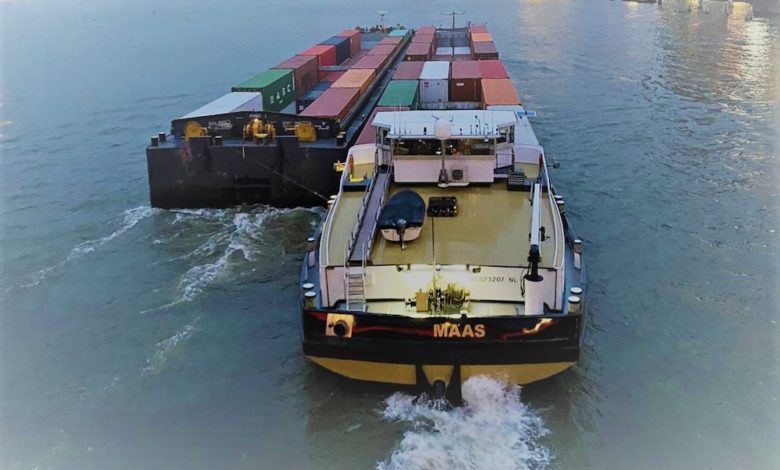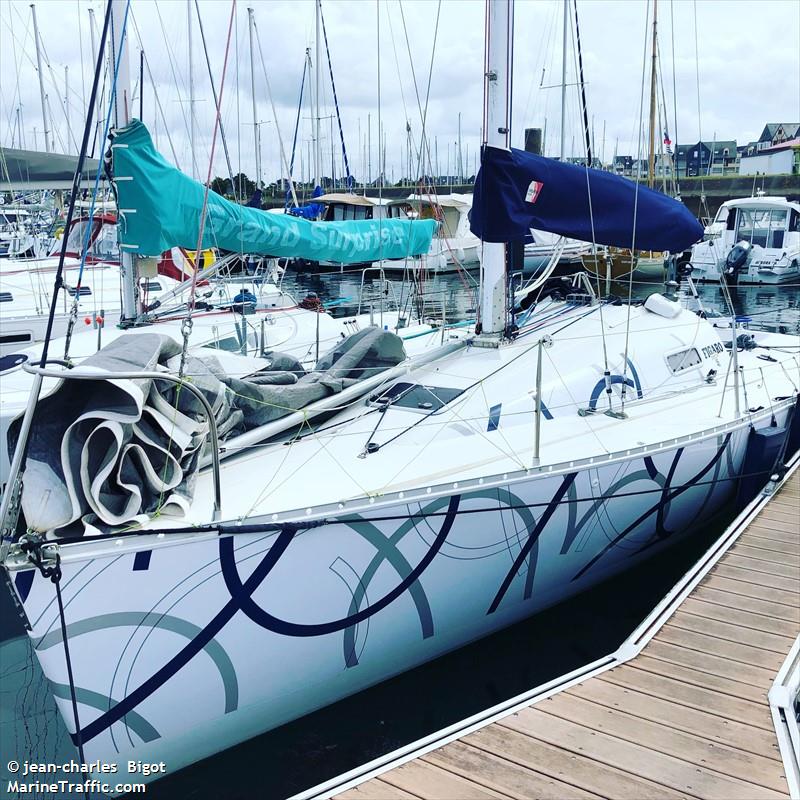Inland boxship to be running on hydrogen by year-end

An inland container vessel will be running exclusively on hydrogen power by the end of this year.
Future Proof Shipping (FPS) has contracted Holland Shipyards Group (HSG) to retrofit the 110 m long Maas to run off a zero-emissions hydrogen propulsion system.
Retrofitting will involve replacing the internal combustion technology with hydrogen technology, removing both the main engine and gearbox, and installing a new modular propulsion system. This will consist of electric motors, hydrogen tanks, a PEM fuel cell system needed to convert hydrogen into electricity as well as a battery system. The compressed hydrogen tanks, the fuel cells and the battery system are separate units that can be removed for maintenance or replacement purposes.
The hydrogen and fuel cell system will be installed in the cargo space of the vessel, with the hydrogen being placed above the fuel cell system in two feu weighing approximately one tonne at 300 bar.
The fuel cell system will be triple redundant with 825 kW capacity to supply propulsion and auxiliary power and a 504 kWh lithium-ion battery pack for peak shaving, secondary and bridging power. The system will contain a 750V DC bus bar and an e-motor for propulsion.
“This future-proof ship will truly be a zero-emissions vessel, a vessel to forge the way for a greener and more sustainable inland shipping industry,” commented Richard Klatten, CEO of Future Proof Shipping.
Once back in service, the Maas will carry on shipping containers between Rotterdam and Antwerp. It is expected to reduce greenhouse gas emissions by 2,000 CO2 equivalent tonnes annually.
Future Proof Shipping aims to build a fleet of 10 zero-emissions inland and short-sea vessels based on long-term time charter contracts over the next decade.

 to run off a zero-emissions hydrogen propulsion system.
to run off a zero-emissions hydrogen propulsion system.
Inland boxship to be running on hydrogen by year-end –
Quite a bold step.
Lot facilities to be incorporated in Engine room.
Seawater Purification
PEM Electrolyzer
H2 compression to 300 bar
H2 cylinder storage
FC
Battery
Electrical system
Electric Motor.
The space availability compiling IMO /Safety regulation
Risk Analysis
Justifying cost against Carbon Tax, if any.
The capital cost and payback for this retro-fit is neatly ducked? Where is the hydrogen coming from. If it is reformed methane then the energy balance goes in the wrong direction. Green hydrogen produced by intermittent wind seems to be a long term prospect where again the economics are opaque.
Has any whole system analysis been done of future maintenance and certification?
I think the idea is to find out.
In shipping a really think hydrogen fuel cells are most definitely the future there are items to iron out and greater efficiencies to be made.
The idea to take the seawater or riverwater around the boat via pump to onboard tanks, foward osmosis rather than purify, PEM elctrolysis, to split the oxygen and hydrogen to make hydrogen for clean energy use either in combustion or electrical engines. Then exhuast oxygen directly into the water therefore locally improving water oxygen content could be massive game changer.
Two holding points more efficient catalysts and making the cells micro or even nano in size to speed up the reaction and allow the activation energy for the electric field to have greater influence. The thoery is there its just putting it into practice in a efficient manner. Look foward to seeing advances in this field. Would remove need for massive fuel tanks in ships thus increase load capacity, remove the cost of fuel replace with cell change outs and if you could also do a traditional hydroxide electrolysis in tadeem to the foward osmosis method then all the better
The hydrogen containers have to be made of special materials to avoid embrittlement and cracking. This adds to the cost. The experimental ‘hydrogen goop’ being developed at Fraunhofer Institute, for use in exhisting IC engines is much more promising.